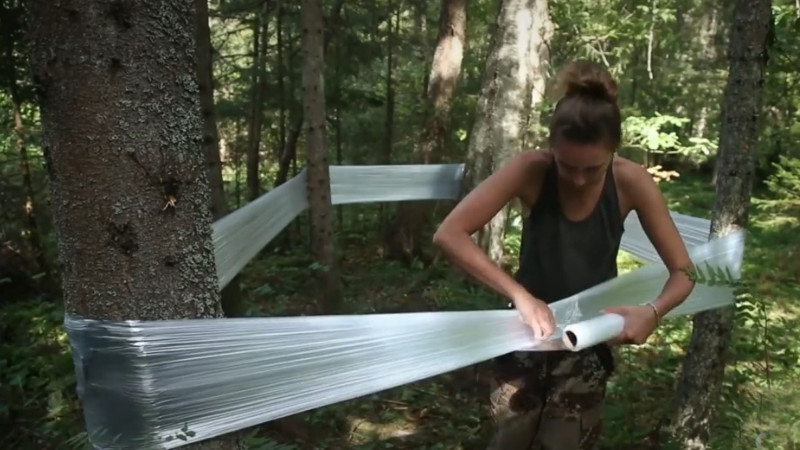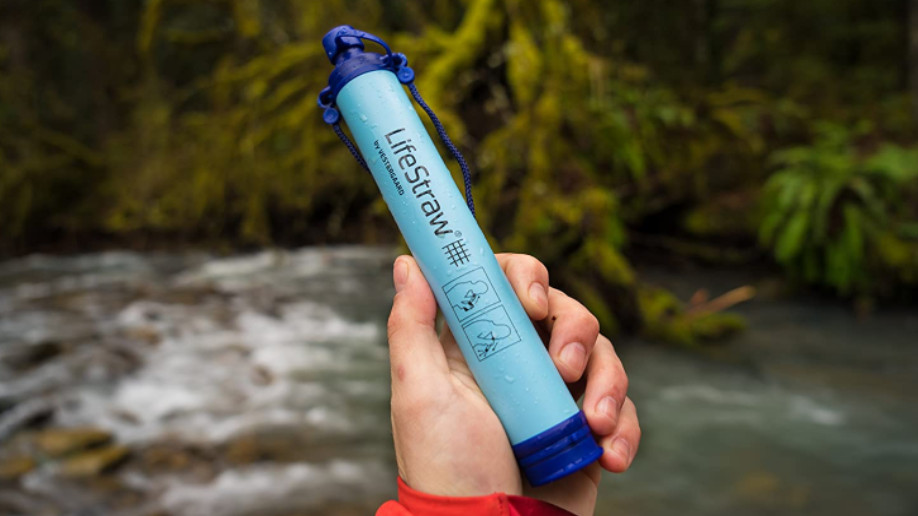Please, please don't make a DIY tent out of plastic wrap
A viral video shows a woman creating a 'tent' in the woods using yards and yards of plastic wrap, and it's a terrible idea

A TikTok 'camping hack' has gone viral, showing a woman constructing a kind of tree tent using colossal amounts of plastic food wrap. She starts by creating a platform between four trees using masses of wrap, then makes another layer on top, and finally wraps the entire structure in even more film to create 'walls'.
As Backpacker observes, the result is a mess, impractical, and an environmental nightmare. The plastic wrap will be unusable even if the camper bothers to take it down from the trees afterwards.
It's also dangerous. The plastic wrap offers no ventilation. On a sunny day the interior will basically become a greenhouse as hot air is unable to escape, and as the temperature drops at night, condensation will form on the inside, making everything wet and potentially leading to hypothermia (in addition to ruined belongings).
There's no rain cover, so water can leak right in, and there's no protection from wind, either. Naturally bugs will find their way inside too, unlike a properly made tent with ventilation mesh.
@fairyinsoles ♬ original sound - Fairy Insoles
Plastic food wrap isn't cheap either, particularly in the industrial quantities used here, and constructing this single-use structure probably cost more than many proper single-person tents. If you're on a tight budget, we'll be rounding up all of this year's best Amazon Prime Day camping deals, which are likely to include several offers on tents and sleeping bags.
Camping hacks
Despite its reputation, there are a lot of genuinely good (or at least harmless) tips on TikTok that could make your camping trip easier and more fun, but there's plenty of bad or incomplete advice as well.
For example, one video shows how to construct your own water purification filter using charcoal from a campfire, rocks, and sand. This is indeed possible, but what the video doesn't show is that you'll need to pass the water through the filter several times to get it clean enough, and you should boil it afterwards to kill micro-organisms. Instead, the clip shows a woman passing murky water through the filter once, then taking a swig from a suspiciously perfect looking bottle.
Advnture Newsletter
All the latest inspiration, tips and guides to help you plan your next Advnture!
If you must drink from a river or other natural water source, it's safer to use a device like a Lifestraw, which doesn't just remove visible particulates, but uses specially designed hollow fiber membranes to trap bacteria and viruses.

Another video suggests filling your water bottle with hot water and keeping it in your sleeping bag. Beverage bottles aren't intended to be used this way, and if the bottle leaks or the outside gets too hot, you could end up badly burned. The danger is particularly serious in a sleeping bag, as the hot water will soak into the bag, trapping it against your skin as you try to free yourself.
One more camping hack shows a person making popcorn by adding dry popcorn kernels to an empty beer can with a slug of oil, then putting the can on the campfire. Once it's stopped popping, the person cuts the can open to reveal perfect popcorn. What they don't mention is that 95% of food and beverage cans are lined with a material called BPA to stop the metal reacting with the contents, and heating this up could result in it leaching into the popcorn.
If in doubt, it's best to do things the boring, traditional way. You'll be able to fit lots more popcorn into a regular pan anyway, and you won't need to risk cutting yourself on sharp metal once it's done.

Cat is Homes Editor at TechRadar and former editor of Advnture. She's been a journalist for 15 years, and cut her teeth on magazines before moving online. She helps readers choose the right tech for their home, get the best deals, and do more with their new devices.
